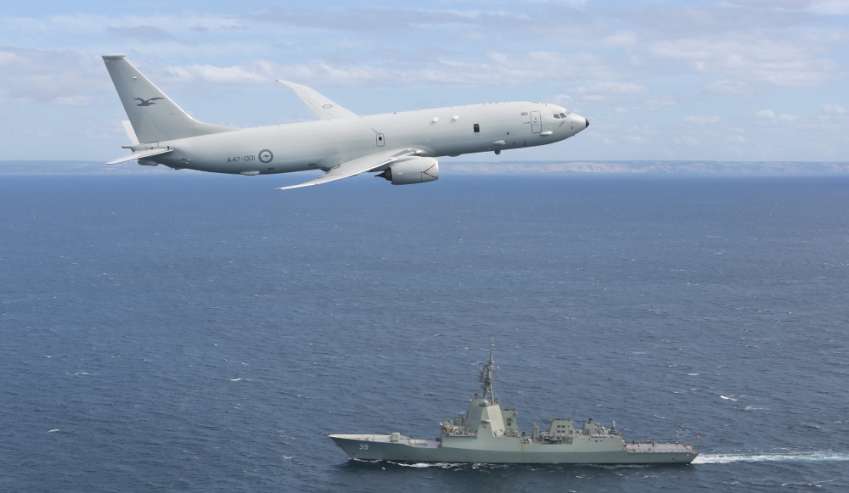Australian and Indian Poseidon aircraft have worked together for the first time during the premier Australia-India military exercise.
To continue reading the rest of this article, please log in.
Create free account to get unlimited news articles and more!
An Australian P-8A Poseidon and an Indian Navy P-8I collaborated to give comprehensive and crucial surveillance in the maritime domain for the ships and submarines participating in the third biennial iteration of the exercise.
AUSINDEX 2019 was the most complex to date and focused on anti-submarine warfare and tactical maritime manoeuvres. The naval exercise is the cornerstone of Indo-Pacific Endeavour 2019 (IPE19) activity in India.
Squadron Leader Brian Brown said that after a visit to Sri Lanka, the Royal Australian Air Force’s No. 11 Squadron travelled to Indian naval base INS Dega in Visakhapatnam to prepare for the exchange.
"We are excited to be working with the Indian Navy to expand our understanding of each other’s capabilities and strengthen our defence relationship. For the first time in history, each maritime patrol aircraft will share platform-to-platform processes and procedures to enhance interoperability and integration with the ships and submarines," SQNLDR Brown said.
During the AUSINDEX harbour phase, the co-ordination meeting in Visakhapatnam discussed the execution of the exercise’s sea phase. P-8I aircraft captain, Commander Kanwar of Indian Navy Air Squadron 312, said aviation operations were a key component of the exercise.
"The last time the RAAF was here for the inaugural AUSINDEX in 2015, they operated their AP-3C Orion with our P8I, a very different capability," CMDE Kanwar said.
The P-8A Poseidon is designed for long-range anti-submarine warfare; anti-surface warfare; and intelligence, surveillance and reconnaissance missions. It is capable of broad-area maritime and littoral operations. It is also effective for humanitarian and search and rescue missions.
The aircraft has advanced sensors and mission systems, including a state-of-the-art multi-role radar, high definition cameras, and an acoustic system with four times the processing capacity of the AP-3C Orions.
The P-8A is built specifically as a military aircraft. It is based on the proven commercial designs of Boeing's 737-800 fuselage, but has been substantially modified to include:
- A weapons bay;
- Under wing and under fuselage hard points for weapons; and
- Increased strengthening for low level (down to 200 feet) operations and high angle turns.
A derivative of the 737-800 Next Generation, the P-8 combines superior performance and reliability with an advanced mission system that ensures maximum inter-operability in the future battlespace.
The P-8A aircraft has an extensive communications system including radios and data links across VHF, UHF, HF and SATCOM. An internal fuel capacity of almost 34 tonnes allows the P-8A to conduct low level anti-submarine warfare missions at a distance of greater than 2,000 kilometres from base. The P-8A will be compatible for air-to-air refueling with the KC-30A MRTT.
Australia has committed to purchasing 12 P-8A Poseidon aircraft, which will replace the ageing fleet of P-3C Orion aircraft. Australia's first aircraft arrived in Canberra on 16 November 2016, with the remaining 11 aircraft to be delivered by March 2020. IOC for the first eight P-8As is scheduled for the period 2017-2020.
Stephen Kuper
Steve has an extensive career across government, defence industry and advocacy, having previously worked for cabinet ministers at both Federal and State levels.

 Login
Login








